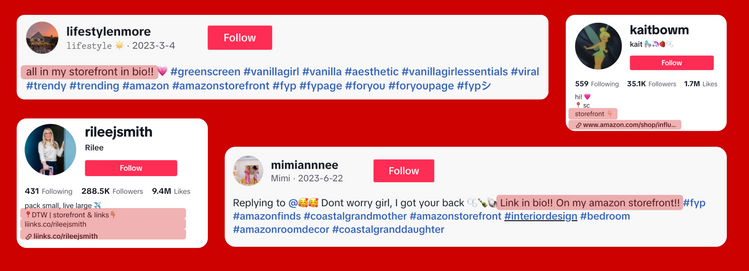top of page
Role
User research, stakeholder research, competitor analysis, prototyping
Time
10 weeks, Jun. - Aug. 2024
Design team
Lane Banta (Roundel marketing intern)
Wylie Welch (Roundel marketing intern)
Makda Asmelash (Social marketing intern)

Consumer insights
From the get-go, marketing leadership had outlined two north stars for our team to focus on. We asked ourselves, how might we:

Gen Z consumer behavior
My fellow marketing interns Wylie and Makda identified our target audience, Gen Z’s, characteristics, shopping habits, and social media usage. Specifically, they found that Gen Z individuals are:


As digital natives, Gen Z were the first generation born into technology, thus giving way to social-media informed and review-based purchasing. Technological means of payment, like using Apple Pay or mobile wallets, has superseded physical cards.

Gen Z and social media
Gen Z has enthusiastically embraced and adopted new social media platforms like TikTok, especially favoring quick and engaging content (e.g. short-form videos).
The most used social media sites include:

Competitor analysis
With consumer insights gathered by my teammates, we decided to revamp Target's storefront to attract Gen Z traffic. We evaluated competition in the affiliate space.
We chose creator storefronts for several reasons:

Here, we also discovered opportunities to improve the creator experience in spaces our competitors (e.g. Amazon Storefront) lacked. We discovered that:

Case study: LTK
We identified LTK as a leading competitor utilizing creator-generated content as a way to appeal to Gen Z and inspire purchases. For context, LTK is a platform that enables users to “Shop curated style picks from Creators you trust and discover new ones you love to follow”.
Case study: Pinterest
We also looked at Pinterest for inspiration -- an app made to “Discover recipes, home ideas, style inspiration and other ideas to try.” We identified certain features from the Pinterest app that would resonate with Gen Z's values of diversity and inclusivity.

Mobile: Platform of choice
From here, I began developing Figma prototypes for Target storefront on mobile. We purposefully selected mobile as our platform of choice for two reasons:
1. Gen Z users are mobile creatures at heart, yet Target storefront only exists on desktop.

2. When it comes to accessing storefronts, Gen Z users are pipelined through TikTok links -- a primarily mobile app.

Design and prototype
When prototyping the features of the mobile storefront, I aimed to ensure the UI and flows remained reminiscent of popular creator-driven apps -- LTK, Pinterest, and elements of Instagram.
Tiktok to creator's Target Storefront
Creator pages
Home page
Single post
Personalization
bottom of page